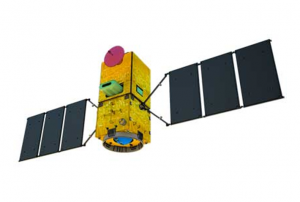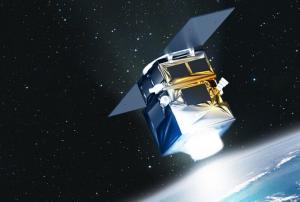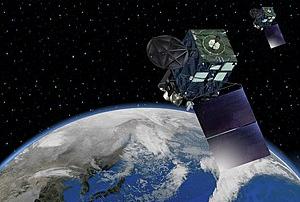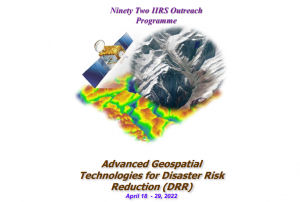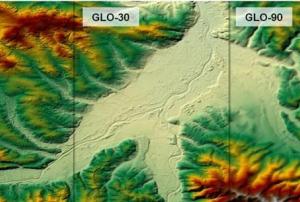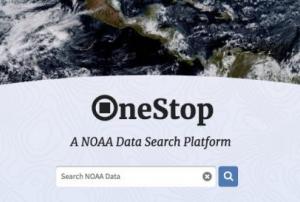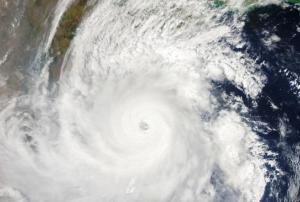Geofísicas
Definition
UN-SPIDER Regional Support Offices with hazard-specific expertise
Related content on the Knowledge Portal
Amazônia-1 is the first Earth Observation satellite completely designed, integrated, tested and operated by Brazil. It features the optical Advanced Wide Field Imager (AWFI), with swath width 850 km and 60 m resolution, capturing images in 3 visible bands and 1 near-infrared (NIR) band. It has a high revisit period of 5 days, which is important for increasing the probability of capturing useful images over frequently overcast areas including the Amazon region. The data will be accessible to the scientific community, government agencies, and to users interested in a better understanding of the terrestrial environment. The Amazon mission is planned to have three remote sensing satellites: Amazonia-1, followed by Amazonia-1B and Amazonia-2.
28/02/2021Peru’s first Earth Observation satellite was commissioned by the Peruvian government for its national space agency, CONIDA (Comisión Nacional de Investigación y Desarrollo Aeroespacial) in 2014, and constructed in a record time of less than 24 months. PerúSAT-1 features the very-high-resolution optical New AstroSat Optical Modular Instrument (NAOMI) imager designed and developed by Airbus Defence and Space. This silicon carbide optical instrument provides panchromatic images with 70 cm spatial resolution and multispectral images in up to 2 m spatial resolution. PerúSAT-1 is based on Airbus Defence and Space’s AstroBus-S platform, and captures up to 300 images covering an area of 63, 000 km2 per day.
16/09/2016Himawari 8 is a Japanese weather satellite, the 8th of the Himawari geostationary weather satellites operated by the Japan Meteorological Agency. The spacecraft was constructed by Mitsubishi Electric with assistance from Boeing, and is the first of two similar satellites to be based on the DS-2000 satellite bus. Himawari 8 entered operational service on 7 July 2015 and is the successor to MTSAT-2 (Himawari 7) which was launched in 2006.
07/10/2014Natural disasters are becoming more frequent and intense across the globe. Enhancing resilience to increasing hazards, exposure, and vulnerability therefore requires leveraging of advanced geospatial technologies for better disaster mitigation and management. With continuous improvements in satellite data sensor acquisition parameters together with geo-computational approaches, geospatial technologies have emerged as the most powerful technology for all phases of disaster management. The course on advanced geospatial technologies for Disaster Risk Reduction (DRR) is scheduled from April 18 - 29, 2022 .
Course Content
- Overview of remote sensing & Geographic Information System
- Application of satellite communication technology for disaster mitigation
- Overview of UAV for disaster monitoring and mitigation
- Emerging geo computation, online GIS & Geo-web services for DRR
- Advanced application of Geospatial...
- The Copernicus DEM is a Digital Surface Model (DSM) which represents the surface of the Earth including buildings, infrastructure, and vegetation. The Copernicus DEM is provided in 3 different instances. Two worldwide coverages at 90m (GLO-90) and 30m (GLO-30) resolution are openly available to the public for download via the PANDA Catalogue and FTP. A further European coverage (EEA-10) is provided at 10m resolution, but data is restricted to eligible users who meet required access rights.Publishing institution:
- The Copernicus DEM is a Digital Surface Model (DSM) which represents the surface of the Earth including buildings, infrastructure, and vegetation. The Copernicus DEM is provided in 3 different instances. Two worldwide coverages at 90m (GLO-90) and 30m (GLO-30) resolution are openly available to the public for download via the PANDA Catalogue and FTP. A further European coverage (EEA-10) is provided at 10m resolution, but data is restricted to eligible users who meet required access rights.Publishing institution:
- Publishing institution:
- NOAA OneStop was created as a pathfinder effort to provide enhanced collection and granule searching for only those datasets archived at the National Centers for Environmental Information (NCEI). The portal provides a user-orientated point of access to weather, climate, satellite, fisheries, coastal, geomagnetic, and ocean data.Publishing institution:
According to the latest issue of an annual disaster statistics report, floods were the deadliest type of disasters in 2019, followed by extreme temperature, while storms affected the highest number of people. Published by the Centre for Research on the Epidemiology of Disasters (CRED), “Natural disasters 2019 - Now is the time to not give up” draws on data recorded in the Emergency Events Database (EM-DAT), which saw the addition of 396 disasters that affected a total of 95 million and caused $103 billion in economic losses around the world.
Accounting for 40 per cent of disaster events, Asia suffered the highest impact with 45 per cent of deaths and 74 per cent of total affected. India, which saw cyclone Fani cause destruction in 2019, was the country most...
read more20/08/2020- La gestión del riesgo de desastres suele contar con el apoyo de las tecnologías de teledetección durante las diferentes etapas de un desastre. Estas tecnologías junto con los datos geoespaciales encuentran su aplicación sobre todo durante la evaluación de riesgos, la elaboración de modelos de escenarios o la alerta temprana, a pesar de que las medidas preventivas también pueden apoyarse en estas innovaciones. Esta Práctica Recomendada de UN-SPIDER se centra en las medidas preventivas que pueden adoptarse de antemano, utilizando los datos de teledetección sobre las inundaciones y los...
